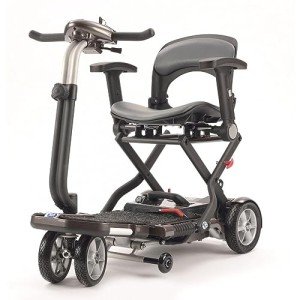Embracing Freedom: A Comprehensive Guide to Compact Mobility Scooters
As the world continues to embrace innovation and inclusivity in transportation, compact mobility scooters have actually become a critical choice for people who look for self-reliance and mobility. These active devices are designed for those with restricted mobility and have actually become significantly popular amongst seniors, individuals with disabilities, and anyone needing support in getting around. This post looks into the nuances of compact mobility scooters, their advantages, types, and whatever one needs to know to make a notified decision.
What are Compact Mobility Scooters?
Compact mobility scooters are small, lightweight variations of traditional mobility scooters, crafted for simple transport and maneuverability. They come geared up with functions that accommodate metropolitan environments, such as narrower frames and tighter turning radii, making them ideal for indoor and outside use. Whether you require a mobility scooter for running errands, interacting socially, or just enjoying a day out, these scooters make such activities available.
Table 1: Key Features of Compact Mobility Scooters
| Function | Description |
|---|---|
| Size | Normally in between 3-4 wheels; compact design |
| Weight | Lightweight variations typically weigh 80-100 lbs |
| Battery Range | Can typically travel as much as 15-25 miles |
| Speed | Average speeds of 4-7 mph |
| Turning Radius | Smaller turning radius for metropolitan agility |
| Portal Accessibility | Capability to fit through standard doorways |
| Portability | Easily taken apart for transportation |
Advantages of Using Compact Mobility Scooters
1. Enhanced Mobility
Compact mobility scooters provide users the freedom to browse environments that might otherwise be challenging or unattainable.
2. Flexibility and Independence
Many users report a significant boost in their capability to run errands or socialize thanks to these scooters, which promote self-reliance.
3. Portability
Many compact mobility scooters can be easily taken apart into lightweight parts, making them hassle-free for travel in cars and trucks or public transportation.
4. Cost-Effective Solution
Compared to powered wheelchairs, compact scooters typically include lower cost, making them a cost-effective choice for lots of.
5. Enhanced Quality of Life
With boosted mobility comes increased opportunities for engagement with household, buddies, and social activities.
Kinds Of Compact Mobility Scooters
Selecting the ideal compact mobility scooter hinges on understanding the different types readily available in the market. Here's a breakdown:
1. Travel Scooters
- Description: Lightweight and easily disassembled, they are developed for people who are regularly on the move.
- Use Case: Ideal for holidays or short trips.
2. 3-Wheel Scooters
- Description: Emphasizing maneuverability and density.
- Use Case: Best for indoor use and tighter spaces.
3. 4-Wheel Scooters
- Description: Offer more stability and can manage rougher terrain.
- Usage Case: Suitable for outside trips and irregular courses.
4. Sturdy Scooters
- Description: Engineered for much heavier individuals, frequently with greater weight capabilities.
- Use Case: Ideal for users requiring sturdiness and assistance.
Crucial Considerations When Choosing a Scooter
Before making a purchase, it's vital to examine various elements that could impact the choice. Here are key factors to consider:
1. User's Mobility Needs
Consider the particular mobility restrictions of the user, as well as the common environments where the scooter will be used.
2. Weight Capacity
Ensure the scooter can safely accommodate the user's weight, including any additional products they might bring.
3. Battery Life
Evaluate how far the scooter can travel on a single charge, specifically if it will be used for extended outings.
4. Portability
Analyze how rapidly the scooter can be dismantled and the weight of the specific parts if travel is a top priority.
5. Safety Features
Try to find features such as headlights, turn signals, and anti-tip mechanisms for enhanced safety.
Frequently asked question Section
Q1: How do I preserve a compact mobility scooter?
A: Regular upkeep includes inspecting tire pressure, cleaning the battery terminals, and making sure all moving parts are lubed. Always describe the maker's particular standards.
Q2: Are compact mobility scooters covered by insurance coverage?
A: Coverage can vary based on your insurance coverage and state guidelines. Some might cover a part of the cost if prescribed by a doctor.
Q3: Can I use my mobility scooter on public transportation?
A: Many public transport systems allow mobility scooters, however it's a good idea to inspect specific regulations and size constraints for each mode of transportation.
Q4: How do I transfer my scooter?
A: Most compact mobility scooters are created to be quickly dismantled. This makes it simple to transport in automobiles or save away when not in usage.
Q5: What is the common cost range for a compact mobility scooter?
A: Prices can vary widely based upon functions and brand name but usually range from ₤ 600 to ₤ 3,000.
Compact mobility scooters represent the intersection of convenience, flexibility, and development in accessible transport. With Rosemary Osofsky offered, users are empowered to choose devices that cater to their unique mobility needs. By considering factors like weight capability, battery life, and portability, individuals can enhance their quality of life, maintain independence, and widen their horizons. With the ideal compact mobility scooter, the world becomes a more available place.

